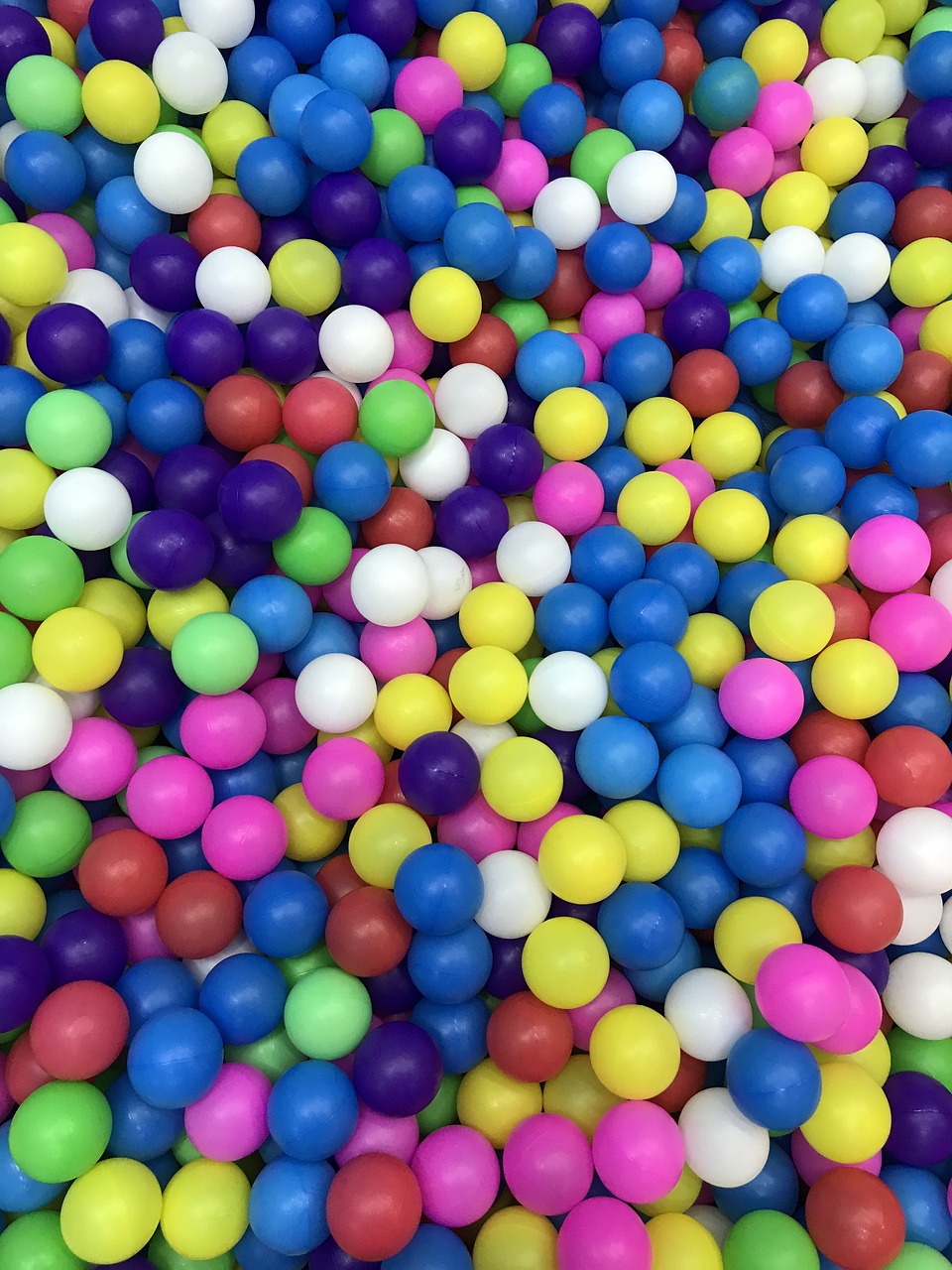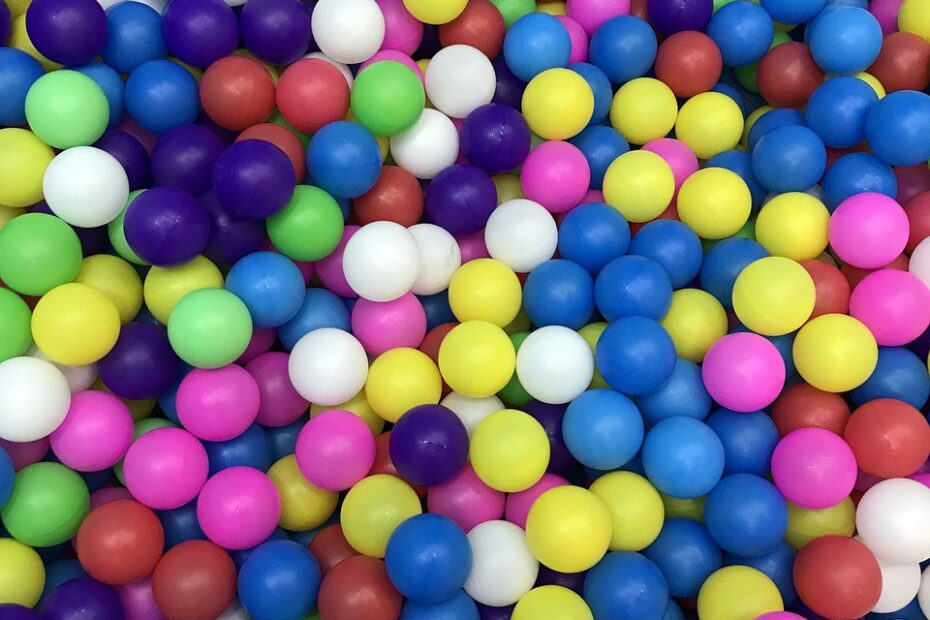Immerse yourself in the enchanting realm of “Time-Tested Classics: Indoor Activities Loved by Babies and Toddlers.” In this article, we embark on a journey through a world filled with imaginative pursuits that captivate the hearts of little ones. Whether it’s engaging with sensory play, exploring the wonders of storytelling, or indulging in the magic of arts and crafts, these timeless activities have stood the test of time, nurturing creativity and fostering delightful experiences. Join us as we uncover a treasure trove of ideas that will transform ordinary moments into extraordinary memories for your family.

Sensory Play and Exploration
Sensory play is a fundamental aspect of a child’s development, allowing them to engage and explore their environment through their senses. One popular sensory activity for babies and toddlers is a rice or pasta sensory bin. This activity involves filling a container with uncooked rice or pasta and providing various scoops, spoons, and containers for the child to explore and manipulate. This tactile experience encourages the development of fine motor skills and hand-eye coordination.
Water play is another enjoyable sensory activity that can be easily set up indoors. Fill a shallow basin or tub with water and provide toys such as cups, spoons, and bath toys for your child to play with. Not only does water play provide a soothing sensory experience, but it also offers opportunities for learning about cause and effect, volume, and measurement.
Playdough is a versatile and engaging sensory material that children of all ages can enjoy. Making homemade playdough is a simple and cost-effective option, and it allows you to customize the scent and color of the dough. Encourage your child to squeeze, roll, and shape the playdough, which helps develop their fine motor skills and creativity. To enhance the sensory experience, you can add various textures, such as glitter, sand, or small objects, to the playdough.
Finger painting is a messy but enjoyable sensory activity that allows children to explore colors and textures while using their hands. Set up a designated area for finger painting, cover surfaces with protective materials, and provide non-toxic finger paints and paper. Encourage your child to use their fingers to create patterns, mix colors, and express their creativity. Finger painting stimulates the senses, enhances fine motor skills, and promotes self-expression.
Music and Movement
Music and movement activities are not only fun but also provide numerous benefits for babies and toddlers. Dancing and singing are simple yet effective ways to engage your child in rhythmic movements and encourage coordination and balance. Play their favorite songs and encourage them to dance and move their bodies to the beat. Singing along with nursery rhymes and songs also helps expand their vocabulary, develop language skills, and improve memory.
Introducing musical instruments to your child at an early age can foster a love for music and enhance their cognitive development. Invest in age-appropriate musical instruments such as shakers, drums, or xylophones and let your child explore the sounds they can create. This activity promotes hand-eye coordination, fine motor skills, and auditory discrimination as they learn to differentiate between various sounds.
Nursery rhymes and songs are a wonderful way to engage your child’s attention and promote language development. Singing familiar nursery rhymes together helps children develop listening skills, phonetic awareness, and memory retention. Use hand gestures or props to make the songs more interactive and engaging for your child.
Scarves and ribbons can be used to encourage movement and coordination in babies and toddlers. Tie a lightweight scarf or ribbon to their wrist and encourage them to move their arms and follow the flowing fabric. This activity promotes gross motor skills, spatial awareness, and imagination as they pretend to be dancers or birds fluttering their wings.
Story Time and Puppet Shows
Story time is an essential activity for cultivating a love for books and storytelling in children from a young age. Choose picture books with colorful illustrations and engaging stories that capture your child’s interest. Read aloud to them, using animated voices and varying tones to bring the characters to life. This activity helps develop listening skills, language comprehension, and imagination.
Interactive storytelling takes the traditional story time experience to the next level by actively involving your child in the narrative. Use props, puppets, or stuffed animals to represent different characters in the story. Encourage your child to participate by making predictions, answering questions, or even acting out parts of the story. Interactive storytelling promotes critical thinking, creativity, and social-emotional development.
Hand puppets are a fantastic tool for imaginative play and storytelling. Create or purchase hand puppets featuring animals, popular characters, or familiar objects. Use the puppets to engage your child in fun conversations, act out stories, or create their own imaginative scenarios. This activity fosters language development, social skills, and emotional expression as they interact with the puppets.
Shadow puppets add an element of mystery and creativity to storytelling. Set up a light source behind a curtain or large sheet and use your hands or cut-out figures to create shadows on the screen. Tell stories with different characters and let your child guess the shadow shapes. Shadow puppetry enhances storytelling skills, imagination, and visual perception.
Block Building and Stacking
Block building and stacking activities are not only fun but also help develop important cognitive and motor skills in babies and toddlers. Wooden blocks are a classic choice for building, as they are durable and easy to grasp. Encourage your child to experiment with different ways of stacking and balancing the blocks, which promotes spatial awareness, problem-solving, and hand-eye coordination.
Lego or Duplo sets are ideal for older toddlers who are ready for more complex building challenges. These interlocking bricks allow children to create structures, vehicles, and even animals, fostering creativity, fine motor skills, and logical thinking. Start with simple building instructions and gradually introduce more intricate designs as your child gains confidence.
Stacking cups provide endless possibilities for building and exploring. These cups can be nested or stacked in various configurations, encouraging your child to experiment with size, balance, and order. Stacking cups promote fine motor skills, visual perception, and problem-solving as your child tries to create stable structures.
Cardboard boxes can be transformed into imaginative play spaces or used for stacking and building. Collect various sizes of boxes and encourage your child to stack them in creative ways, turning them into towers, bridges, or even “houses” for their toys. This activity enhances creativity, problem-solving, and spatial awareness and serves as a great development tool among other indoor activities.

Shape Sorting and Puzzle Solving
Shape sorting and puzzle solving activities are excellent for developing cognitive and problem-solving skills in babies and toddlers. Shape sorters are toys that have various shaped holes, and your child needs to match the corresponding shapes with the holes. This activity promotes shape recognition, hand-eye coordination, and fine motor skills as your child manipulates the shapes to fit into the correct slots.
Peg puzzles are another great option for introducing shapes, numbers, or letters to your child. These puzzles consist of wooden boards with pegs and corresponding puzzle pieces. Guide your child to match the correct puzzle pieces to the pegs, helping them develop fine motor skills, problem-solving abilities, and cognitive skills such as visual discrimination.
Jigsaw puzzles provide a stimulating challenge for older toddlers and help develop problem-solving and critical thinking skills. Start with puzzles featuring large, simple pieces and gradually introduce more intricate designs and smaller puzzle pieces. Completing jigsaw puzzles promotes spatial reasoning, hand-eye coordination, and patience.
Tangram puzzles are a fascinating and educational activity that involves arranging geometric shapes to create specific images or patterns. Provide your child with a set of tangram pieces and encourage them to explore different combinations to form pictures. Tangram puzzles enhance spatial awareness, logical reasoning, and creativity as your child learns to manipulate shapes to fit specific templates.
Pretend Play and Dress Up
Pretend play and dress-up activities allow children to explore imaginary scenarios, develop social skills, and foster creativity. A kitchen and cooking set is a classic pretend play option that encourages role-play, fine motor skills, and creativity. Provide play food, pots, pans, and utensils, and let your child create their own culinary masterpieces.
A doctor or vet kit is an excellent choice for nurturing empathy and understanding of others. Role-playing as a doctor or veterinarian allows children to be in charge of caring for their “patients” and develops their social skills and language abilities as they interact and communicate with others.
Dolls and dollhouses provide endless opportunities for pretend play and storytelling. Encourage your child to take care of the dolls, dress them up, and create imaginative scenarios using the dollhouse and accessories. Playing with dolls fosters nurturing skills, creativity, and language development as they engage in conversations and imaginative play.
Costumes and accessories help enhance pretend play experiences by allowing children to transform into different characters or personas. Provide a variety of costumes, such as princesses, superheroes, or animals, and let your child’s imagination soar. Dress-up activities promote creativity, self-expression, and empathy as children step into the shoes of different characters.

H2: Building and Engineering
Building and engineering activities offer opportunities for problem-solving, spatial reasoning, and creativity. Train tracks are a popular choice for building and imaginative play. Invest in a train set with tracks, trains, and accessories, and let your child explore different configurations and designs. Building train tracks enhances fine motor skills, logical thinking, and storytelling abilities.
Marble runs combine engineering principles with creative play. These sets consist of various tubes, ramps, and connectors that allow children to build their own marble tracks. As they experiment with different designs and observe the marbles’ movements, children learn about cause and effect, balance, and gravity.
Magnetic tiles are a versatile building toy that fosters creativity and spatial awareness. The magnetic pieces easily connect, allowing children to build structures, vehicles, or even abstract designs. Magnetic tiles promote fine motor skills, problem-solving, and visual-spatial skills as children piece together their creations.
Straw or pipe cleaner contraptions offer a hands-on engineering experience for toddlers. Provide your child with straws, pipe cleaners, and connectors, and let their imaginations run wild. They can create simple shapes or more complex structures, encouraging fine motor skills, creativity, and engineering skills.
H2: Arts and Crafts
Arts and crafts activities unleash your child’s creativity and provide opportunities for self-expression. Collage and mosaic projects allow children to explore different textures, colors, and patterns as they create their own unique artworks. Provide a variety of materials such as paper, fabric, buttons, and nature items, and let your child glue or arrange them to create their collage or mosaic masterpiece.
Paper crafts offer endless possibilities for creativity. Provide paper, scissors, glue, and various decorative materials such as markers, stickers, and glitter. Encourage your child to cut, fold, and shape the paper to create their own artwork, cards, or even paper dolls.
Stickers and foam shapes are a simple yet engaging craft activity for young children. Provide a selection of stickers and foam shapes in different colors, sizes, and designs, and let your child use them to decorate paper, cards, or even their own crafts. Sticker activities promote fine motor skills, creativity, and hand-eye coordination.
Nature crafts combine the beauty of the outdoors with creativity. Collect leaves, flowers, sticks, and other natural materials, and provide glue and paper for your child to create their own nature-inspired artworks. Nature crafts foster an appreciation for the environment, creativity, and fine motor skills as children arrange and glue the natural elements.
H2: Sensory Bottles and Discovery Bottles
Sensory bottles and discovery bottles are captivating and calming sensory tools for babies and toddlers. Sensory bottles with glitter provide visual stimulation as the glitter swirls and moves within the liquid. These bottles can be made by filling a clear plastic bottle with water, glitter, and optionally, a few drops of food coloring. Secure the cap tightly to avoid spills.
Discovery bottles with rice offer a tactile and auditory experience. Fill a clear plastic bottle with dry rice and add small objects such as buttons, beads, or small toys. Encourage your child to shake the bottle and listen to the different sounds the objects make as they move through the rice. This activity promotes sensory development, auditory discrimination, and hand-eye coordination.
Bottles with water beads provide a mesmerizing sensory experience. Water beads are small, gel-like balls that absorb water and become bouncy and squishy. Fill a clear plastic bottle with water beads and watch as they expand and create an intriguing visual display. This sensory bottle encourages visual stimulation, problem-solving, and fine motor skills as children manipulate and observe the water beads.
Bottles with sand offer a tactile and calming sensory experience. Fill a clear plastic bottle with colored sand and let your child manipulate and tilt the bottle to watch the sand cascade and create different patterns. Sand bottles provide opportunities for sensory exploration, fine motor development, and visual tracking.
H2: Mess-Free Activities
Mess-free activities are a convenient option for parents who prefer to minimize mess and clean-up. Color Wonder kits are an excellent choice for mess-free coloring. Color Wonder markers only work on special Color Wonder paper, allowing children to experience the joy of coloring without worrying about stains or marks on other surfaces.
Water Wow books are a fantastic mess-free alternative to traditional painting. These books consist of special pages with color-reveal pictures that magically appear when water is applied. Simply fill the water pen with water, and let your child brush it over the pages to reveal vibrant colors. Water Wow books promote fine motor skills, creativity, and hand-eye coordination.
Sticker books provide a mess-free way for children to engage in creative activities. These books have themed backgrounds and a variety of reusable stickers that can be placed and rearranged as many times as desired. Sticker books develop fine motor skills, creativity, and imagination as children create their own scenes and stories.
Magnetic drawing boards offer a mess-free drawing experience with the added benefit of eraseability. These boards have a magnetic surface and a magnetic pen or stylus that allows children to draw, write, and erase with ease. Magnetic drawing boards enhance fine motor skills, hand-eye coordination, and creativity.
Incorporating these time-tested classics into your baby’s and toddler’s daily routine can provide countless hours of fun and learning. Whether it’s sensory play, music and movement, story time, block building, shape sorting, pretend play, building and engineering, arts and crafts, sensory bottles, or mess-free activities, these indoor activities are sure to captivate and engage your child while promoting their development and creativity. Embrace the joy and wonder of these experiences as you nurture your child’s imagination and create lasting memories together.

